Food Stamps To Be Paused For 42 Million Americans: What To Know…
Food stamps are set to be paused on Nov. 1 because of the government shutdown.
Some 42 million Americans will not receive benefits through the Supplemental Nutrition Assistance Program (SNAP) until Congress approves new funding, according to federal officials, although some states have taken steps to intervene.
Congress made money available for SNAP for October before failing to reach a new government funding agreement, which resulted in the government shutting down on Oct. 1, the U.S. Department of Agriculture (USDA) said in a letter to regional and state SNAP officials.
There is not enough money to pay full SNAP benefits to the approximately 42 million SNAP recipients in November, the USDA says.
“Bottom line, the well has run dry,” the USDA said on Oct. 25.
“At this time, there will be no benefits issued November 01.”
As Ryan McMaken details below, via The Mises Institute, according to the Treasury Department’s report on federal spending for fiscal year 2025, total spending on food stamps—also known as the Supplemental Nutrition Assistance Program (SNAP)—was $106 billion for the twelve-month period ending September 30. Even in our post-covid age of runaway monetary inflation, 106 billion dollars is still, as they say, “real money,” and SNAP spending doesn’t even include other food-subsidy programs like WIC and school lunch programs.
In spite of much talk about how the Trump administration is supposedly defunding these programs, they’re not going anywhere. For the calendar year of 2025, the US is on pace to see an increase of six to seven billion dollars over 2024’s SNAP spending total of $99.7 billion. This only continues the longer term upward trend in food-stamp spending.
Indeed, since the Great Recession (i.e., 2008), when total SNAP spending was $52 billion, total spending on the program has doubled—even when measured in inflation-adjusted dollars.
The number of food-stamp recipients has “only” increased by 47 percent over that same period, meaning that per-capita spending for recipients has gone up.
In 2008, total SNAP spending per recipient was $1,847. By 2024, overall per-recipient spending had increased by 30 percent, rising to $2,393.
The overall trend continues upward although the biggest increases occurred during the first Obama administration, during the Biden years, and under Trump’s mega-spending increases of 2020.
Since 2010, the total percentage of the US population that is on food stamps has not fallen below 12 percent.
Nationwide, the total percentage of the population receiving food stamps can vary significantly by state, and region. Measured state-by-state, we find that more than one in five residents of New Mexico receive food stamps. In Utah, on the other hand, fewer than one in twenty receive food stamps.
There are sizeable differences by race and ethnicity as well. Although they comprise 58 percent of the US population, non-Hispanic whites account for only 36.5 percent of all SNAP recipients. Blacks comprise about 26 percent of SNAP recipients although blacks are only 12 percent of the US population. Asians comprise 3.3 percent of the food-stamp recipient population. Those who self-identify as Hispanic (of any race) comprise 16 percent of the recipient population. (Note: according to the Census Bureau data used here, “Hispanic” is classified as an ethnicity and not a race. Since fifty percent of Hispanics self-identify as “white,” self-identified whites actually comprise 71 percent of the population, not 58 percent. (Pew studies suggest that 58 percent of Hispanics self-identify as white.)
Source: “Characteristics of SNAP Households, 2019“, 2020 Census tables P3, P4, P7
Immigration status can be a factor as well. According to the Census Bureau’s Survey of Income and Program Participation (SIPP), more than a third of immigrant-headed households receive food stamps or some other form of food subsidy such as WIC. Nearly half of households headed by illegal-immigrants receive food stamps. (This data is from the 2022 SIPP report.) The percentage for native-born households, on the other hand, is 25 percent. (Note: This is a household number, so is not comparable to the total percentage of individuals in the US population who receive food stamps.)
Source: CIS analysis of 2022 SIPP report data.
In any case, it is remarkable that one in 8 US residents now receive food stamps, and during a period when the “official” opinion is that the US economy is in excellent shape and in a boom period.
This disconnect is due to two factors:
First, it has become easier to qualify for food stamps over the past 15 years.
Moreover, aggregated data about the overall economy hides the fact that economic conditions for lower income households is not nearly as good as that of higher-income groups.
In many cases, thanks largely to the central bank and its monetary inflation, income and wealth have stagnated for middle- and lower- income groups while net worth and income has soared for those who own large amounts of assets and benefit from the financialized economy.
Epoch’s Zachary Stieber details the standoff in Washington…
Trump Admin: Contingency Funds Can’t be Used
Democrats and some organizations have urged the USDA to utilize its contingency funds to ensure that at least some recipients don’t have benefits paused.
About $5 billion in contingency funding is available, according to the Center on Budget and Policy Priorities. The remaining $3 billion could come from other areas, the center said, pointing to how the Trump administration used $300 million in revenue from tariffs to fund a separate program in October called the Special Supplemental Nutrition Program for Women, Infants, and Children.
“There are clear steps the administration can and must take immediately to ensure that millions of families across the country can put food on their table in November,” Rep. Jahana Hayes (D-Conn.), the top Democrat on the House Subcommittee on Nutrition and Foreign Agriculture, and 213 other House Democrats said in a letter to USDA Secretary Brooke Rollins. Most Senate Democrats sent a similar letter to the agriculture secretary.
The USDA said in a memorandum that it could not legally use the contingency funds because the pending pause is not an emergency. House Speaker Mike Johnson (R-La.) backed that position on Oct. 27.
Can States Take Action?
States cannot cover benefits, according to the USDA memo.
“There is no provision or allowance under current law for states to cover the cost of benefits and be reimbursed,” it stated.
Some states have said they will help SNAP recipients, including Virginia and Louisiana, whose governors declared emergencies to obtain emergency funds. They have not yet released details of how they will utilize emergency funds to assist food stamp recipients.
Other states have said that instead of directly providing SNAP benefits, they will look to help recipients access food. Connecticut Gov. Ned Lamont said Monday that he was sending $3 million to Connecticut Foodshare to help the nonprofit with the expected higher burden when food stamps are paused. New York Gov. Kathy Hochul said her administration has fast-tracked $30 million to food banks.
Lawsuit Explored
State officials have decried the looming deadline for SNAP.
Although none have filed lawsuits, officials in at least one state said they’re exploring litigation.
“Even with state efforts, the lack of federal SNAP funding will disrupt the lives of over 63,000 Vermonters and could cause real harm,” Vermont Gov. Phil Scott said in a statement on Oct. 27.
“This is another area where there is bipartisan support for a lawsuit seeking to require the federal government to release contingency funding it has available for emergencies. I have directed my administration to work with Attorney General [Charity] Clark to support a multi-state lawsuit.”
What About Saved Benefits?
The SNAP program gives debit-like cards that are boosted each month with money to buy groceries.
People do not have to use their allocated money each month.
It’s unclear whether people who have accumulated money on their cards will still be able to use them.
State officials have offered conflicting views, and the USDA has not responded to requests for comment on the matter.
Tyler Durden
Wed, 10/29/2025 – 08:05ZeroHedge NewsRead More


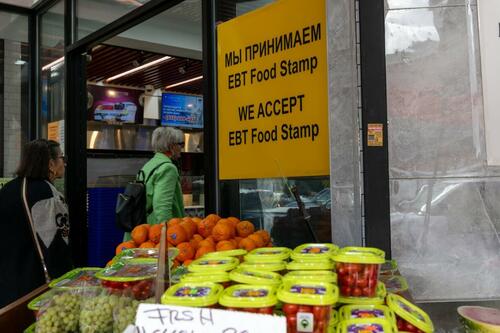
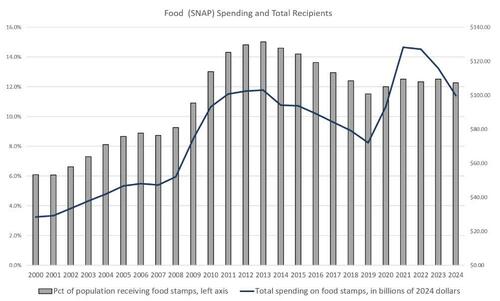
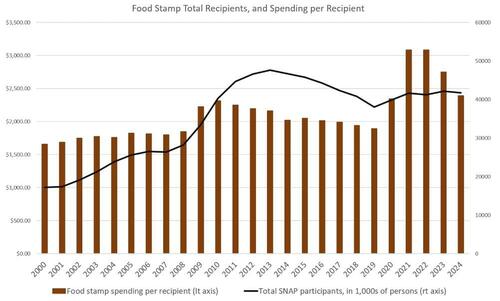
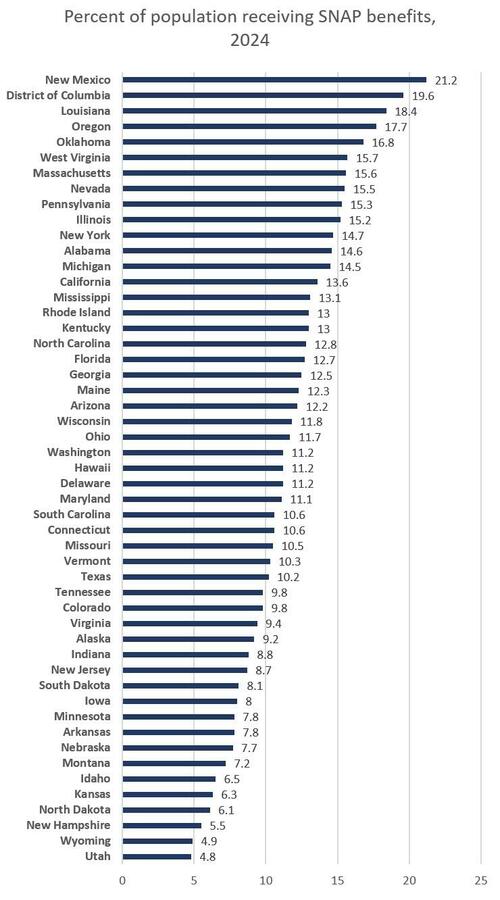
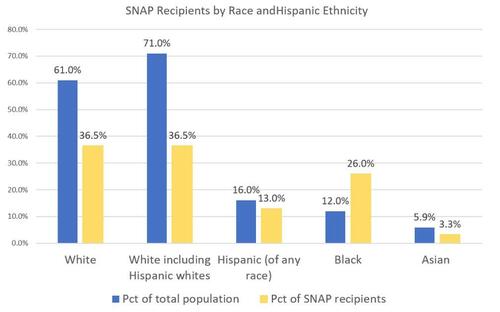
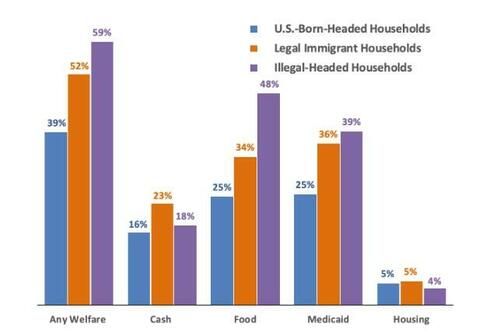
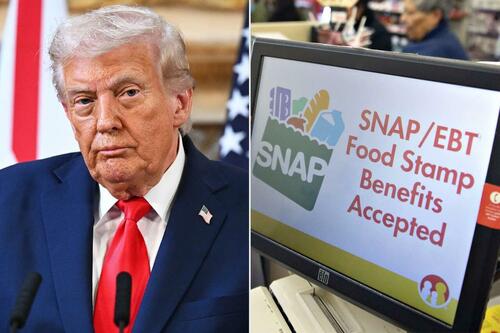



 T1
T1


